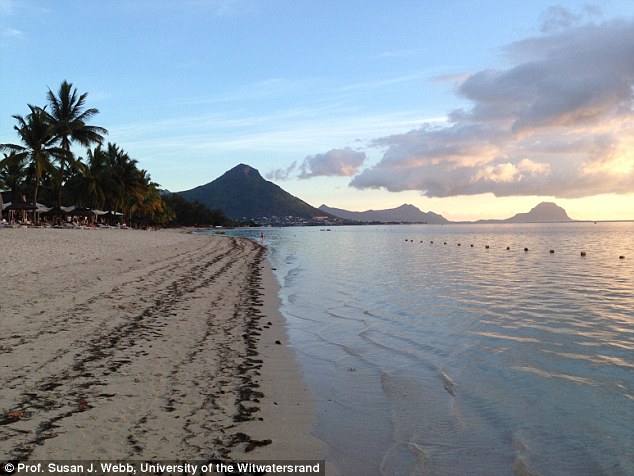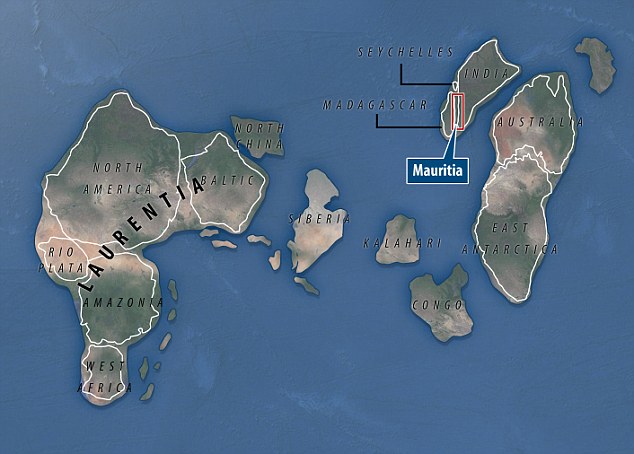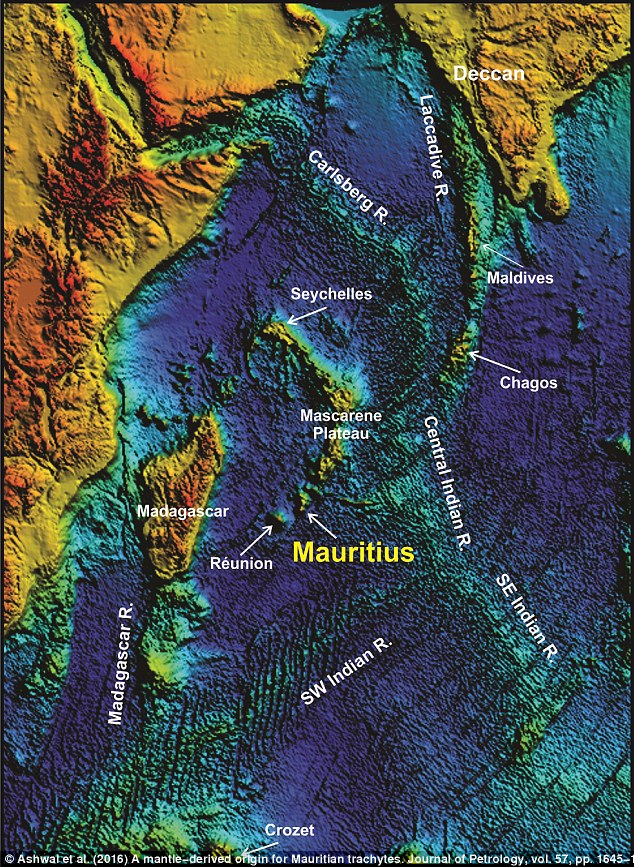Nice picture of a beach in Mauritius, an island in the Indian Ocean and a popular holiday destination …
 … links come from Gary and Robert who have sent in this story. It is on a lot of different sites. We have for example www.dailymail.co.uk/sciencetech/article-4175966/Crystals-carried-lava-re… … which appears to suggest Mauritius is a leftover of Plate Tectonics movement (a piece of the jigsaw left behind when India moved one way and Madagascar the other.
… links come from Gary and Robert who have sent in this story. It is on a lot of different sites. We have for example www.dailymail.co.uk/sciencetech/article-4175966/Crystals-carried-lava-re… … which appears to suggest Mauritius is a leftover of Plate Tectonics movement (a piece of the jigsaw left behind when India moved one way and Madagascar the other.

 … however, when you get to read about it you will realise that computer simulation and modelling have been at work which is why you get a chunk of Africa situated below Amazonia, and various other strange and unlikely configurations. Playing at your computer screen is apparently good fun if you are into Plate Tectonics.
… however, when you get to read about it you will realise that computer simulation and modelling have been at work which is why you get a chunk of Africa situated below Amazonia, and various other strange and unlikely configurations. Playing at your computer screen is apparently good fun if you are into Plate Tectonics.
What has been found is evidence that Mauritius sits on a piece of old crust, something you might think contrary to sliding land masses. Presumably, this piece got stuck in situ and has remained so for millions of years (with Mauritius straddling it). If interested go to the full article at www.nature.com/articles/ncomms14086 which illustrates the research involved. This involves the discovery of zircon crystals that have disgorged, it is thought, by a volcano. The date of the crystals is derived from mass spectrometry methodology. The interesting point made is that Mauritius originally sat on the fault zone between Madagascar and India, and the big split is dated around 60 million years ago (dated shortly after the end of the Cretacious (the Dinosaur Age – which was blasted by the asteroid that left behind the Chicxulub crater in Mexico's Yucatan peninsular). It is interesting to note that the Deccan Traps lava outflow in India may have occurred at the same time (but in geochronology is situated shortly thereafter but separated by a few millions of years). In geochronology we may assume the split between Madagascar and India is located even longer after the asteroid blast – but this only highlights the problems inherent in gradualist geochronology as it would seem feasible to infer they all occurred simultaneously and the sedimentary layers that divide them were also laid down quickly (a bit like the sediments following the Mount St Helens eruption not so long ago). That is not to suggest all sediment layering is instantaneous but when dealing with a major catastrophic event such as an asteroid strike, one may legitimately hypothesise that sudden layering may have occurred. See Nature Communications, 20th September 2016. One might suspect this story has appeared in January as Nature has released the full article outside pay view but it has certainly hit the media with a big bounce. It is at http://phys.org/print405080087.html … and at www.newscientist.com/article/2119963-long-lost-continent-found-submerged… … However, to read it in an easily digestible format I would recommend the post at www.dailygalaxy.com/my_weblog/2017/01/existence-of-lost-continent-under-… … where we are presented with the spit up of Gondwanaland, which occurred long before 60 million years ago (on mainstream chronology) and opens the possibility Mauritius is a remnant left behind by that event rather than having a connection with the asteroid strike. In other words, it is stranded as a result of the breakup of Pangea somewhat earlier in the Dinosaur Age. We have probably not heard the last on this subject – and let's hope scientists continue to delve into the processes involved. The problem is that Plate Tectonics suffers from too much theory and not enough evidence on the ground. This has led to some geologists going back to the Earth Expansion model and whilst not advocating that theory over Plate Tectonics once can see there is nothing about Mauritius that actually contradicts the idea of expansion. It is more a case of how could the earth expand – and where does the material come from to make the ocean basins grow and fragment the land masses. This also impinges on theories of how the earth might have become a watery planet. At the moment it is looking like water was part of earth from the beginning – or at a very early stage. Was that water trapped inside rocks? If so how could that make the earth expand? What other factors are involved? Whereas Plate Tectonics might very well be the most likely process that does not mean it is a fact. It is hypothesis and should be treated in that manner – other theories being aired in an open manner.
